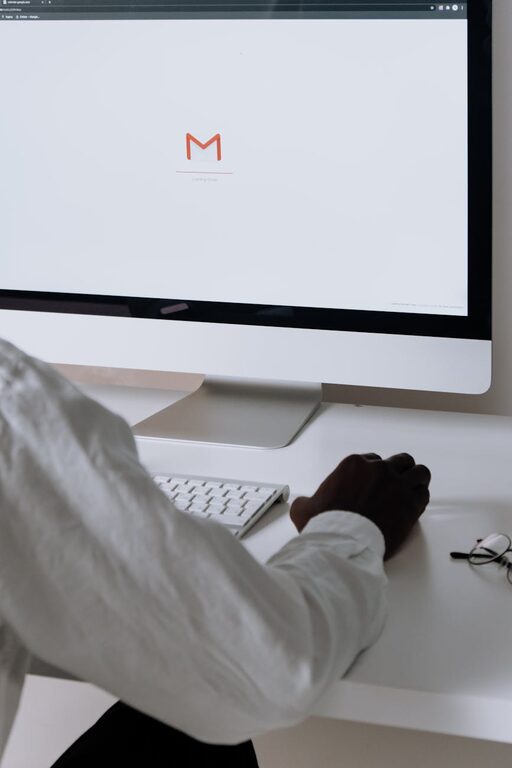Managing your email inbox can sometimes feel like a full-time job. With new messages arriving every minute, it’s easy to become overwhelmed and lose track of important communications. Fortunately, with a few simple strategies, you can keep your emails under control and enjoy a more organized, stress-free digital life. In this post, we’ll explore practical tips to help you manage your inbox efficiently.
Why Managing Your Emails Matters
A cluttered inbox not only wastes time but can cause you to miss important messages or deadlines. By creating an effective system to handle emails, you reduce stress and improve productivity. Clearing your inbox on a regular basis helps you focus on what really matters.
Step 1: Set Up a Routine for Checking Emails
Instead of constantly checking your inbox throughout the day, dedicate specific times to handle emails.
– Schedule email sessions: Check your inbox two to three times daily, such as once in the morning, once after lunch, and once before finishing work.
– Use timers: Limit each email session to 20-30 minutes to avoid spending too much time sorting through messages.
– Turn off notifications: Disable email alerts to keep distractions at bay and help you stay focused on other tasks.
Step 2: Use Folders, Labels, and Filters
Creating a system to automatically organize emails will save time and reduce clutter.
– Folders or labels: Group emails by topics such as Work, Family, Bills, or Newsletters. This makes it easier to find messages later.
– Filters: Set rules to automatically sort incoming emails into the right folders. For instance, emails from your bank can be directed to the “Bills” folder.
– Star or flag important messages: Mark emails that need your immediate attention or follow-up.
Step 3: Unsubscribe from Unnecessary Newsletters
A common cause of email overload is unnecessary newsletters and promotional emails.
– Review subscriptions: Periodically check which newsletters you no longer read or find useful.
– Unsubscribe promptly: Most newsletters have an unsubscribe link at the bottom. Taking a minute to click can prevent future clutter.
– Use dedicated email addresses: Consider using a separate email account for newsletters and online sign-ups to keep your primary inbox cleaner.
Step 4: Adopt the “Inbox Zero” Philosophy
“Inbox Zero” is a popular method aimed at keeping your inbox empty or close to empty.
– Process emails immediately: When you open a message, decide whether to delete it, reply right away, delegate, or file it.
– Delete or archive: If the email requires no action, either delete it or archive it for reference.
– Avoid hoarding emails: Keeping too many emails can slow down your inbox and cause stress.
Step 5: Use Templates and Shortcuts
If you often send similar responses, templates can save time.
– Create email templates: Save common replies for questions or requests you get frequently.
– Use keyboard shortcuts: Many email clients offer shortcuts to quickly perform tasks like composing, archiving, or deleting messages.
– Practice concise writing: Keep emails clear and to the point, reducing the need for back-and-forth.
Step 6: Prioritize and Flag Important Emails
Not all emails require the same urgency.
– Use priority flags: Many email platforms allow you to mark emails as high priority.
– Sort by importance: Focus on answering urgent and important messages first.
– Set reminders: For emails requiring follow-up, use your calendar or email reminders to ensure you don’t forget.
Step 7: Regularly Clean Your Inbox
Schedule time weekly or monthly to clean out emails.
– Delete old emails: Remove outdated messages that no longer serve a purpose.
– Archive or backup: Store emails you want to keep but don’t need immediate access to.
– Empty spam and trash: Periodically clear these folders to free up space.
Step 8: Consider Email Management Tools
If you receive an exceptional volume of emails, third-party tools can help.
– Email clients with smart sorting: Tools like Spark or Edison Mail organize your messages automatically.
– Unsubscribe services: Websites like Unroll.me help unsubscribe from unwanted newsletters en masse.
– Task managers: Apps like Trello or Todoist can integrate with your email to keep tasks organized.
Final Thoughts
Keeping your emails under control is achievable with a little effort and consistency. By setting routines, using organization tools, and keeping your inbox clean, you’ll find more time for important work and less frustration. Start implementing these tips today and transform your email experience.
—
Remember, the key to email control is not perfection but steady progress toward a more manageable inbox. Happy emailing!

